MOVIE PREVIEW – Wes Anderson’s latest film revolves around a 1955 Junior Stargazer convention where a group of bright teenagers are confronted with world-changing events. The film stars Jason Schwartzman, Scarlett Johansson, Tom Hanks, Jeffrey Wright, Tilda Swinton and Margot Robbie, among others. The film will be released in Hungarian cinemas on 14 September 2023.
Asteroid City is a tiny dot on the map: a small town in the American Southwest. We are in 1955. The biggest attraction of the city is the nearby gigantic meteor crater and the nearby astronomical observatory. This weekend, soldiers and astronomers will host five genius kids who will show off their inventions. Not far away, beyond the hills, you can see the mushroom clouds of nuclear tests.
Our story begins with a celebration to recognize the achievements of the Young Star Explorers, but an unexpected guest stumbles in: an extraterrestrial. Asteroid City goes bankrupt, and the army creates a false cover story, but the precocious genius seedlings, as if they had stepped out of one of Spielberg’s classics, forge a plan on how to notify the outside world.
But, as is usual with Anderson, it’s actually much bigger than that. East of the crater, the inhabitants of Asteroid City are preparing to perform a play called Asteroid City. We take a look behind the scenes, into the lives of the actors. Actors practice to become stars.
It’s all still as much fun as all of Anderson’s work, but it’s an undertaking on a much more cosmic scale. The film analyzes the complex family relationships, the unfolding of new loves, the parent-child relationship, secrets, discoveries and how to outwit the minds of adults with depth and personal fervour. It also connects the windswept West and the gray East and presents to all his perfect emotional balance, which no one can capture better than Wes Anderson.
Welcome to Asteroid City
1955, American Southwest, Asteroid City. Population: 87 people. Inventory: a 12-seat diner, a one-well gas station, a motel with 12 cottages, a phone booth, plus an asteroid crater with an observatory a little further from the city. This is where we first meet Augie Steenbeck (Jason Schwartzman), Midge Campbell (Scarlett Johansson) and Stanley Zak (Tom Hanks).
We soon bump into them again, this time backstage, where Jones Hall (Schwartzman) and Mercedes Ford (Johansson) and their co-stars are rehearsing the play Asteroid City. What we see is a play within a play, the likes of which no one has staged before. “Our film centers around an actress playing an actress playing an actress,” explains Wes Anderson.
Augie, a newly widowed war correspondent, arrives in town with his three little daughters and his teenage son, Woodrow (Jake Ryan), the latter a Young Astrologer. They came to celebrate this weekend’s Asteroid Day: the commemoration of the B.C. It pays homage to the famous asteroid impact that occurred on September 27, 3007. Movie star Midge Campbell (Johansson) and her daughter Dinah (Grace Edwards), who is also a Young Star Explorer, and three other Space Cadet award-winning children, accompanied by their scientific inventions and their parents, also arrive in Asteroid City.
The hosts of the ceremony are five-star general Grif Gibson (Jeffrey Wright) and dr. Astronomer Hickenlooper (Tilda Swinton).
But let’s stop for a moment and start at the beginning, when the Host (Bryan Cranston) announces in a TV studio around 1950: “Tonight’s broadcast takes us behind the scenes to witness the production of an American play from beginning to end.” It is the stage of the Tarkington Theater, which is located in the area close to Broadway in New York, where we can meet the playwright Conrad Earp (Edward Norton) and the company, whose two leading actors are Jones Hall (Schwartzman) and Mercedes Ford (Johansson).
The square, black-and-white image changes to a color widescreen, we are speeding towards Asteroid City on top of a freight train, and the words of the Host ring in our ears that the play Asteroid City is not reality. An imaginary drama that was dreamed up specifically for this broadcast. The characters are purely imaginations, the text comes from presuppositions, the events are fictions based on sources of dubious origin – but all of this together is an authentic account of the creative process leading to the creation of a modern play.
Asteroid City is more closely connected than any Wes Anderson film to the two trends that defined America in the fifties: one is the West, the other is Broadway, with their own heroes and legends. We are still in the era of the conquest of the West and land speculation. Post-war paranoia is rampant, nuclear secrets are being kept vigilant, great inventions are being made, and America is starting to look to the stars. Perhaps it will be thanks to the activities of a Young Astronomer at NASA that in a decade and a half man will be able to set foot on the moon. In 1955, the world of science was permeated by the feeling that anything and everything was possible.
Longing characters often appear in Wes Anderson’s films: Richie, Margot and Chas Tenenbaum want to be close to their father, the three brothers in Journey to Darjeeling are looking for their mother. In Asteroid City, without his beloved companion, Augie Steenbeck is forced to face the trials of fatherhood, reconcile with his father-in-law and create a new family peace, and if he manages to pull himself together, he must tell his children that their mother is dead , and his ashes were transported for days in a plastic food barrel.
A new love blossoms, a scientist offers his support to his talented student, a widow and a divorced woman get close for a few nights – everyone’s future takes a slightly new direction. As always with Anderson, empathy develops between filmmaker and audience, Asteroid City touches hearts.
The production
Asteroid City is Wes Anderson’s new kind of creation, its atmosphere and style are nevertheless immediately familiar. A dreamlike land where we feel like pondering the big questions of the universe: love and loneliness, grief and hope, the meaning of life (and death). Anderson always reveals to us horizons in amazing detail and scale that were previously unknown to us, but the pillars of the world he builds are always made up of the heroes who populate it. This time, Anderson guides us into the desert, but the paths leading to the goal connect two sides of America in the 1950s: the theater and the West.
“For me, film is never just a single idea,” says Anderson. “At least two different things come together and it becomes a motion picture.” The location of the first story draft created by Anderson and Roman Coppola was the eastern metropolis, but then the action was moved elsewhere. “I wanted to make a theatrical film. Like when Paul Newman and Joanne Woodward go on stage together… Our idea was that there was a theater company preparing to perform a play… We called it Automata Buffet and we thought the whole story was about this kind of caterer. takes place on location. Then we thought that the story should have a Sam Shepard feel. So we left the vending machine and moved out into the desert.”
The world of the various stages was overshadowed by the literal and symbolic clouds of the Cold War. In an extremely tense political atmosphere, there was an insidious fear of rockets plunging from the sky, and on the horizon of mass culture, atmospheric explosions were caused by Martians and other cosmic visitors. Children and adults alike scanned the sky, looking for mushroom clouds and Martians. “Something connected these things, the stifling atmosphere of the Eisenhower era and the xenophobia created a strange connection,” says Anderson.
Not long ago, artists – mainly actors and directors -, many of whom, for example Elia Kazan, drew a lot from Russian theater theory, i.e. Stanislavsky’s method, at the beginning of their careers inextricably combined politics and art in the theater company called Group Theatre.
Asteroid City tells the story of people living at a particular historical moment, and Anderson asks, “Emotionally, what lies beneath the surface of the Actors Studio? What happens to them? If we make a film about this era, what kind of America do we want to write about?”.
(The head of the Actors Studio, Lee Strasberg, based on the work of his predecessors, developed the method called method acting, which still defines the American stage and film culture to this day. – the ford.)
Let’s poke the stars
Like a dream, this film is a mixture of thoughts and scenes. It opens in black and white, in a TV studio, reminiscent of productions from the golden age of television, such as Playhouse 90 – effectively Broadway on TV – where audiences could watch live TV plays directed by John Frankenheimer and Sidney Lumet, starring stars such as Lee Cobb and James Dean. At that time, the Actors Studio was the most prestigious theater workshop, where legends such as Dean, Marlon Brando, Sidney Poitier and Rod Steiger mastered the tricks of the trade under the direction of Kazan and Lee Strasberg. For many actors of this generation (along with future filmmakers and screenwriters), these TV drama productions were a stopover on their way from theater to film.
“When I started to think that I wanted to make a film, this era was decisive,” says Anderson. – We watched The Godfather and Taxi Driver and Brian De Palma. But perhaps even more: Marlon Brando and James Dean, Montgomery Clift and Kazan. What influenced us the most was the emotional world of the films and their relationship with the theater. This film era could roughly begin with A Streetcar Named Desire. At that time, Tennessee Williams most powerfully depicted the struggle of heroes with damaged souls with themselves and the world.”
Theater basically defines Anderson’s style. The improvised settings, the unique visual ballet, the literal stage where, despite the hopelessness of the task, they work hard to find a solution. In Anderson’s first film, The Firecracker, the criminals commit a series of staged robberies; Max Fischer or Tenenbaum in Clever Eggs, Margot Tenenbaum in House Curse tries to process her inner trauma with the help of theater; and if we dive into Fresh Water Life, the story begins right there on the stage.
Anderson began writing one-act plays at the age of ten. Years later, he befriended Owen Wilson at a playwriting seminar and offered him a role in one of his college plays, A Night in Tunisia, based on Sam Shepard motifs. “I’ve always been there for Sam Shepard,” says Anderson. – Owen and I were totally hooked even before we did our first film together. We got up and went to bed with him at that time. I once read an interview with him where he talked about people who came home from World War II and were unrecognizable and turned into violent and driven fathers. They raised him.”
This fascination with Shepard gave birth to the character of Augie Steenbeck. Augie also visited the battlefield, but he was not a combat soldier, but a war correspondent. Augie’s father-in-law, Stanley, may take life casually according to his social status, yet he carries a pistol, the hilt of which peeks out from behind his belt. Anderson hinted in an interview that Stanley might have developed this habit during the war, and then he couldn’t get rid of it in civilian life either. Anderson is able to weave precisely such small but important details into his works so unnoticed: he does not draw attention to them, he does not explain what they are about, but the intentional placement of the reference characterizes the given character in an instant.
In 1955, the war still has its effects, because the country is full of veterans, and the memory of the great trauma does not leave their families untouched either. “Something happened when the American middle class went out into the wide world and came home injured,” Anderson points out. – They are desperate, they are lost, and this state of affairs sharply conflicts with the peaceful idyll that the hinterland wants to maintain at all costs. They are on opposite sides of the railroad tracks.”
Although this is not the main focus, and Schwartzman and Hanks delicately play on the emotional strings of their characters, this opposition is palpable between Augie and Stanley, where the father-in-law has always thought that his son-in-law is not good enough for his daughter. However, unlike the way this situation is usually presented in the melodramas of the period, there is no great tragedy: since they would do anything for the four children, they keep the family together.
Anderson and Coppola wrote the lead role for Schwartzman, with whom they had worked for a long time. “The pandemic had just started, the chaos and uncertainty became even greater – recalls the actor. – Then this opportunity came, and I didn’t hesitate much, because for me Wes has always been like a lighthouse in the fog. When the movie came up, I had no idea what it was about, but I knew I could trust the lighthouse.”
Parents and children
A constant oppressive atmosphere hangs around Augie Steenbeck, just like Jones Hall. Augie, as played by Jones, is carrying a heavy burden: he recently lost his wife, so even being photographed on the front line felt better than he does now, when he and his father-in-law, Stanley, are debating how to tell the four children that their mother is dead, and his ashes are in the plastic food barrel.
How to cope with grief? This is just one of the many themes that Anderson dissects in Asteroid City. Examining the emotional lives of the heroes is the area where Anderson is most at home in his chosen craft, especially when he touches on the most harrowing, often devastating experiences. “We’re probably most concerned with death,” says Anderson. – These are the biggest milestones in our lives. The losses. Maybe that’s what movies are about, or so I think. About the cosmic power of our lost loved ones.”
Jones Hall, the actor, clumsily fiddles with his pipe, lighter, and beard, and all this is “acting artifice,” as Anderson puts it, a sign that the artist is trying to figure out how he should portray his role. When we first see him behind the scenes, on his feet with his Converse sneakers on, he oozes coolness, but at the same time, it seems that all this is not meant for anyone else, but only for himself. We’ve come across this image before, it’s impossible not to think of James Dean.
Like Jones Hall, actress Midge Campbell and playwright Conrad Earp also evoke memorable faces of the era. In connection with Campbell (and in connection with the actress Mercedes Ford, also played by Scarlett Johansson), Marilyn Monroe immediately jumps in, who also belonged to the Actors Studio circle in her last years. “She was a movie star who secretly wanted to be a great stage actress, and her connection to the Actors Studio is now legendary,” says Anderson.
Associated with Monroe, her husband, the playwright Arthur Miller, came to the screenwriters’ minds. “Our playwright is roughly a combination of the two great figures of the era, William Inge and Arthur Miller,” continues the director. – But somehow, beneath the surface, Tennessee Williams had the most emotional impact on us, even though our play is not exactly what he would have written. Plus, our author lives in a house like Truman Capote’s in Montauk. So everything is well mixed up here.” (It could be Andy Warhol’s vacation home on Long Island, where he often hosted Capote. He also photographed him in front of the house, the picture is a precious piece of his life’s work. – the ford.)
Monroe’s last role was in Miller’s The Walking Dead. “This brings us to the west while also being connected to New York,” explains Anderson. “A room in Gramercy Park, with a stud of wild horses next to it.” The situation is similar with our actress: she is mainly from Marilyn Monroe, but there is also a little bit of Kim Stanley, who was mostly a stage actress, and also a little bit of Jane Russell.”
Johansson’s playing impressed Schwartzman. “I developed the character in nine months, I suffered a lot with it. Scarlett and I started rehearsing. Wes gave him some points and he put the character together right under my nose. What took me nine months, he did in nine minutes.”
A third type of encounter
Everyone in Asteroid City is amazed and confused when the alien appears. Augie is able to photograph it, so there is proof that the creature really exists, but that doesn’t provide an explanation or make any connections. However, their lives change. All Augie can sum up is, “I think the alien stole the asteroid.”
The appearance of the alien understandably creates an emergency in Asteroid City. Scientists debate, the army mobilizes, a quarantine is introduced. But these measures are much less important than what the event does to the eyewitnesses: they are amazed, amazed, and reevaluate their lives. For Dr. Hickenlooper, the appearance of the extraterrestrial represents a new scientific milestone, the great discovery of his life; the General finds a new purpose in life. For everyone else, especially children, the new possibilities of the universe open up new horizons on Earth as well.
In the summer of 1947, a mysterious silvery object crashed in the desert near Roswell, New Mexico. The military reported only sporadically about what happened, not long after that the newspapers were full of news of the event, and the cosmic mystery has excited the American imagination ever since. At the time of the plot of Asteroid City, the flying saucer craze had already crept into books and TV movies, intertwined with wild dreams of the nuclear age and the space race, and Cold War hysteria flowed into all of this, which foreshadowed a potential danger in all aliens. A famous case: In 1955, a family living in Kentucky reported that they used firearms to repel an attack by small green Martians, holding the attackers under fire for four hours. (Opinions are still divided about the incident: skeptics point to natural causes as explanations, such as meteorites, owls, and alcoholism.) The aliens embodied several hidden fears: not only communism, the Soviet invasion, and nuclear doomsday, but also unemployment. and also inflation.
The mystery of the aliens was then not only the subject of government research, but the government itself also fueled the fire: UFOs were used to cover up secret military programs. (Incidentally, the Roswell UFO turned out to be a top-secret experimental balloon that crashed to spy on the Soviets’ nuclear program.) Recently, grainy videos released by the US Navy and accompanying government reports have suggested that espionage by a foreign power was involved. behind UFO sightings, but some details and the secrecy left a couple of loopholes open for further speculation that they are actually American aircraft – but it is also possible that alien spacecraft were captured. The mystery surrounding the mystery remains unsolved.
Back to our film: from the beginning, the figure of the alien was considered the central character of the story, which makes everyone in the city introspective. Anderson and Coppola thus entered an unknown territory for them. “We wrote the story and didn’t know the details until we got to the alien showing up,” says Anderson. “But in the end, it’s something that just happens on its own.”
The alien descends into the boat with his spaceship: both were models, no computer tricks were used. The alien was imagined to be 215 cm tall, which is much taller than Jeff Goldblum, who is 193 cm tall. Mark Coulier, who won an Oscar® for his masks in The Iron Lady and The Grand Budapest Hotel, designed a costume on stilts for the actor, with which Goldblum practiced fervently.
Those who meet the space creature in Asteroid City will have their trajectory slightly altered, as they are confronted with infinity. He realizes that he is not alone in the universe, and perhaps not even here on Earth.

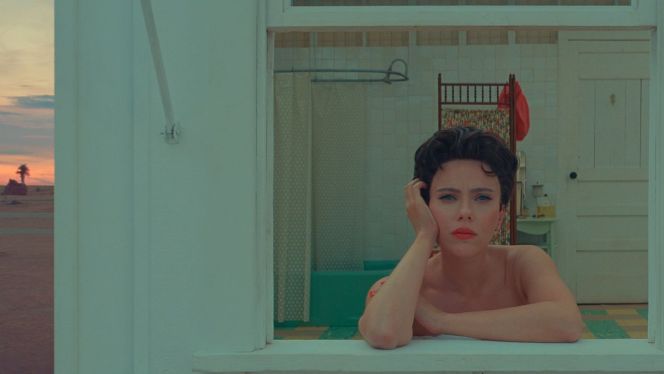
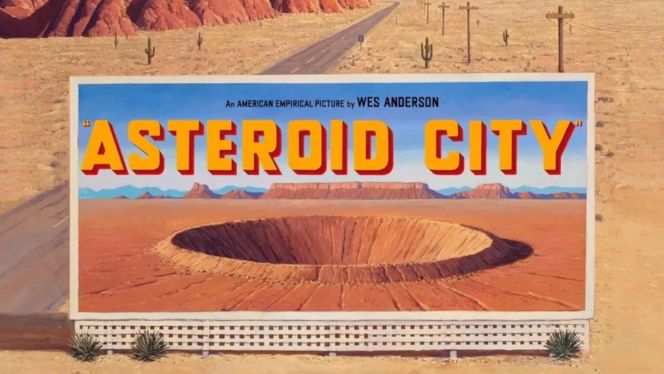
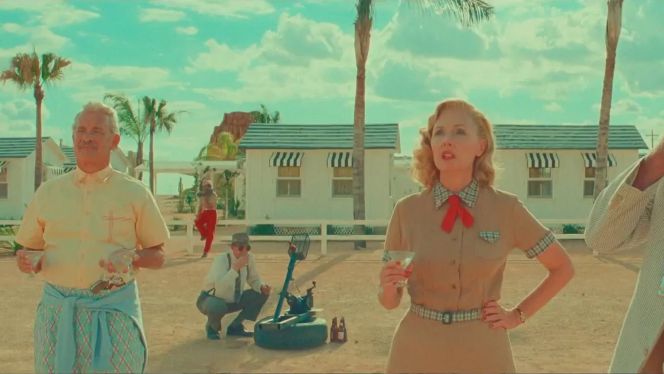
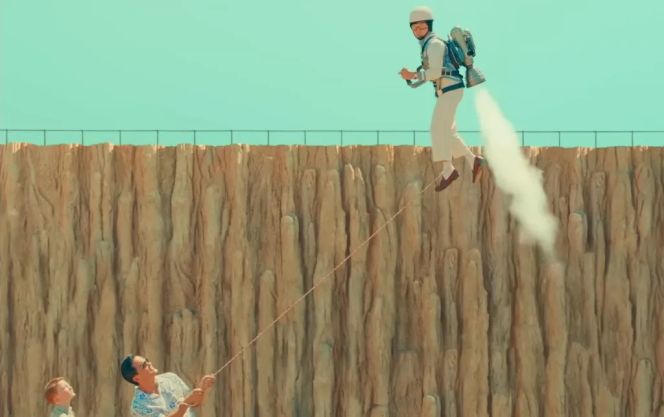
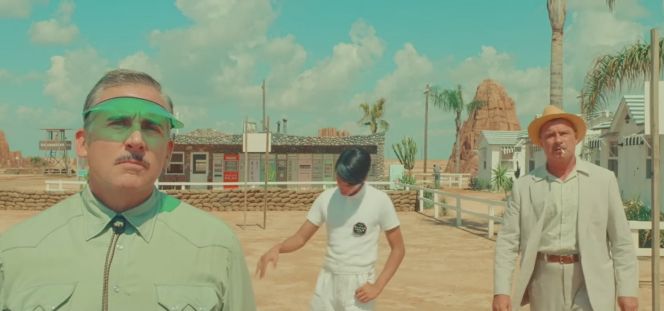

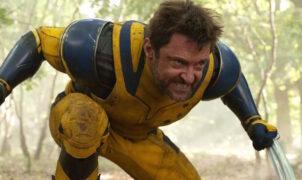
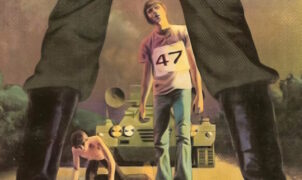
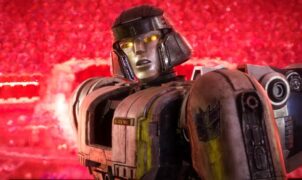


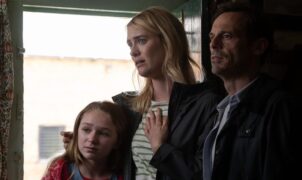
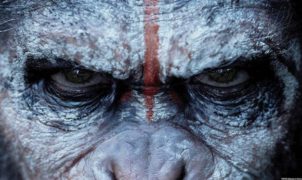
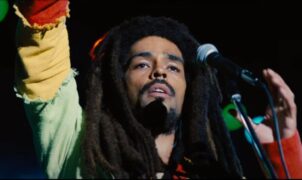
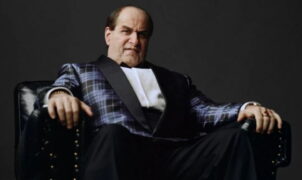




Leave a Reply